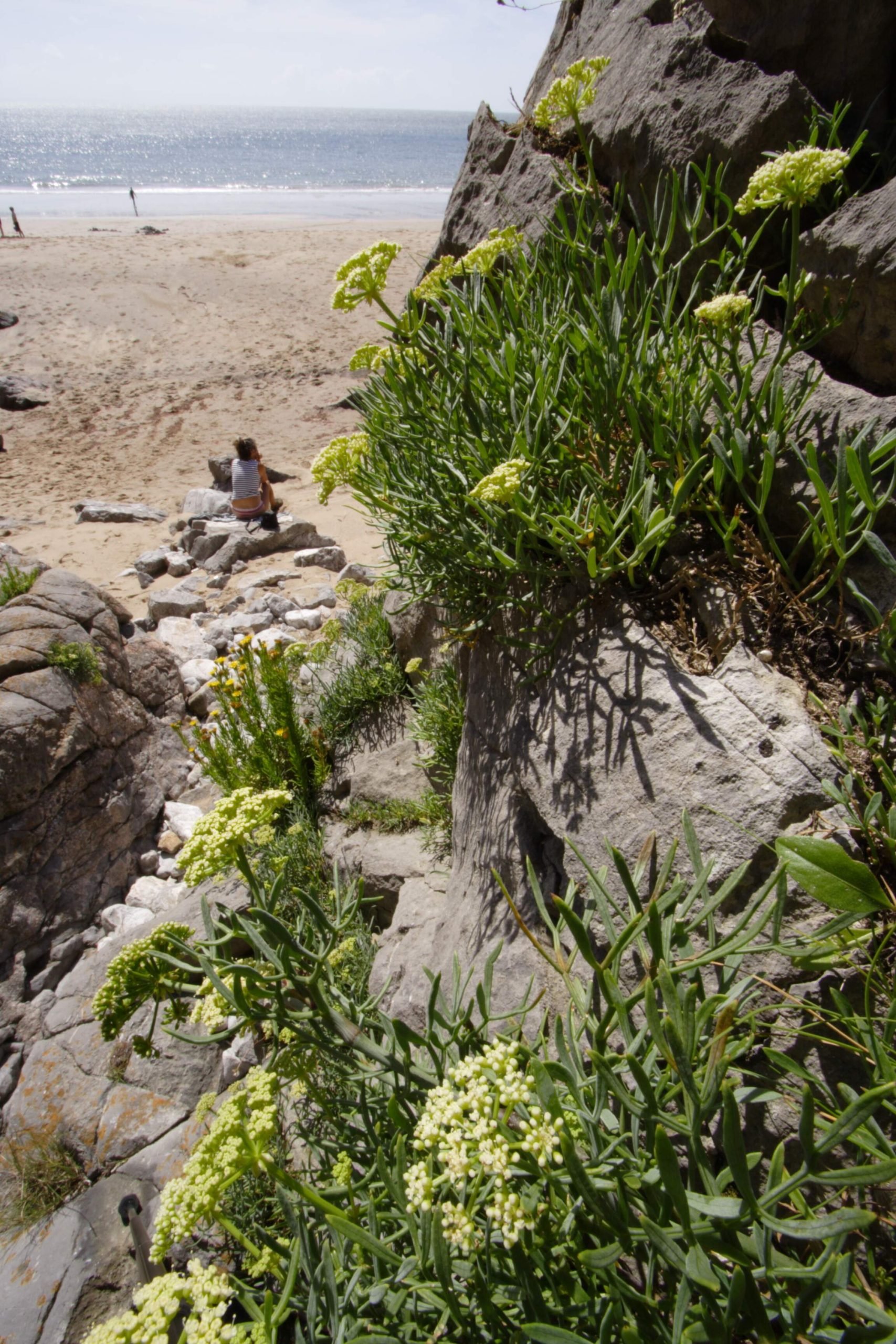Description
Not to be confused with marsh samphire (Salicornia species), rock samphire is a member of the carrot family. It can be identified from other umbellifers by its coastal habitats, its 2- to 3- pinnate, fleshy green leaves and its yellowish green flowers. If further confirmation is required, its crushed leaves are said to smell strongly of furniture polish.
Habitat Information
Rock samphire is reasonably common along the south and west coast of Britain becoming rarer or absent in the north and east. It is most frequently found in rock crevices and cliffs ledges subject to sea spray but can also be found on stabilised shingle maritime grassland.
Although completely unrelated both marsh samphire (also known as glasswort) and rock samphire are edible succulents. Despite having a somewhat more ‘challenging’ taste the rock samphire seems to be original or true samphire. It has a long history of being pickled and used with fish dishes and is mentioned by Samuel Pepys and in Shakespeare’s King Lear.
Growing Information.
Like most umbellifers rock samphire is best sown in autumn as the seed requires a period of chilling to stimulate germination. Although restricted in the wild to coastal habitats rock samphire can be used as an attractive succulent for gravel gardens and rockeries.


